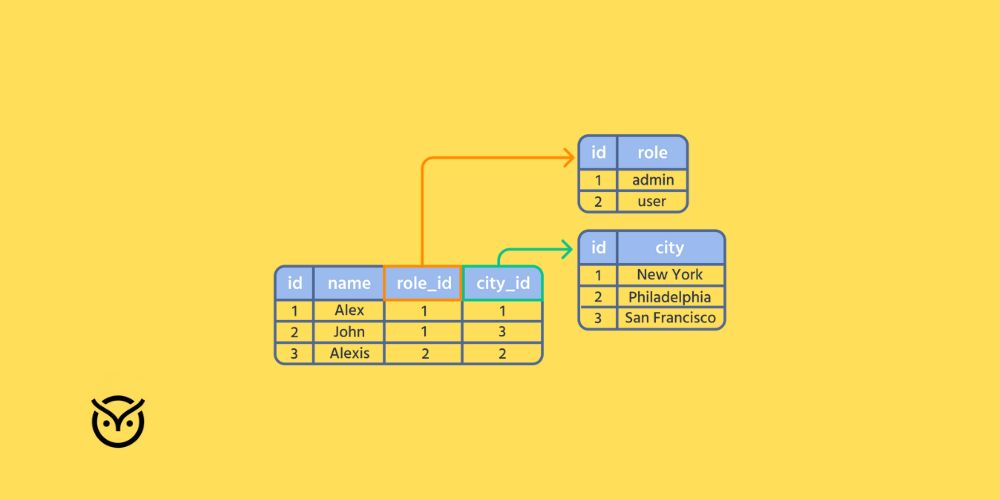
TL;DR
- AI talent shortage is real
- Demand > skilled supply
- Entry-level oversupply, expert gap
- Skills > degrees in 2025
- Big chance for job seekers
- Employers must upskill or lose out
This year, the AI talent shortage is shaping up to be one of the biggest challenges or opportunities in the tech world. From Fortune 500s to startups, companies are struggling to fill roles in AI, machine learning, and data science. There may be millions of open roles, but finding people with the right skills is still a significant challenge. So, is the shortage real or just overblown hype?
The truth? It’s a bit of both. The real problem is a tech talent shortage driven by a mismatch between available skills and the actual requirements of today’s roles. As the demand for AI-powered solutions grows across every sector, like finance, health, and manufacturing, the mismatch between what’s taught and what’s needed has never been clearer. This blog will dig into what the numbers say, what’s fueling the gap, and what both job seekers and employers can do about it.
What Is the AI Talent Shortage?
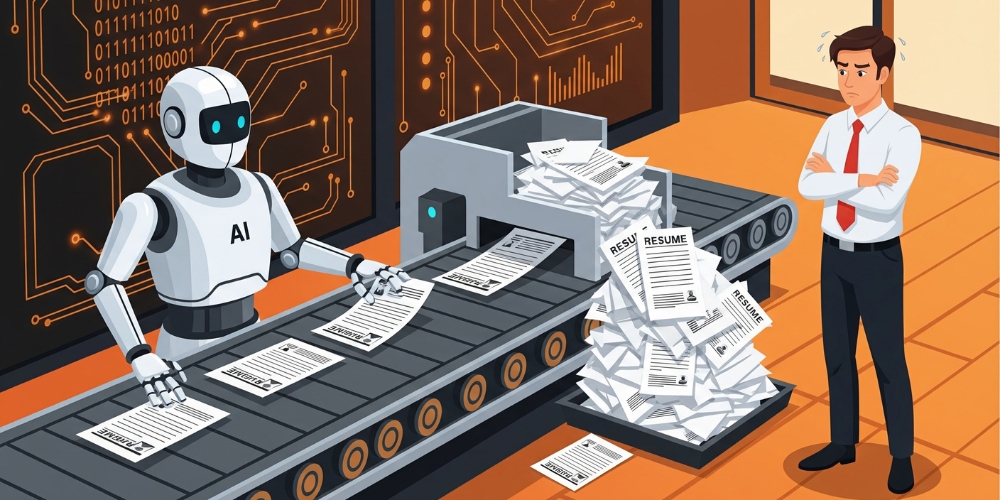
The AI talent shortage refers to the growing gap between the demand for professionals skilled in artificial intelligence and the number of qualified individuals available to fill those roles. It’s not just about having general tech knowledge. It’s about having specific expertise in machine learning, natural language processing, data engineering, and AI infrastructure.
What’s causing this gap?
- Explosive demand: The global AI market is expected to grow from $279.22 billion in 2024 to over $1.8 trillion by 2030. This skyrocketing adoption means more companies are looking for AI talent than ever before.
- Not enough hands-on training: Universities are producing computer science graduates, but many of them lack the practical experience required for enterprise AI roles.
- Outdated pipelines: Old-school hiring methods haven’t kept pace with how modern AI skills should be assessed, which only adds to the talent gap.
This shortage spans across roles like:
- AI/ML engineers
- Data scientists
- AI product managers
- AI infrastructure specialists
- Trust and safety experts (especially relevant for generative AI tools)
Role Decoder Puzzle
Roles (drag or tap)
Definitions (drop or tap)
What the 2025 Data Actually Says
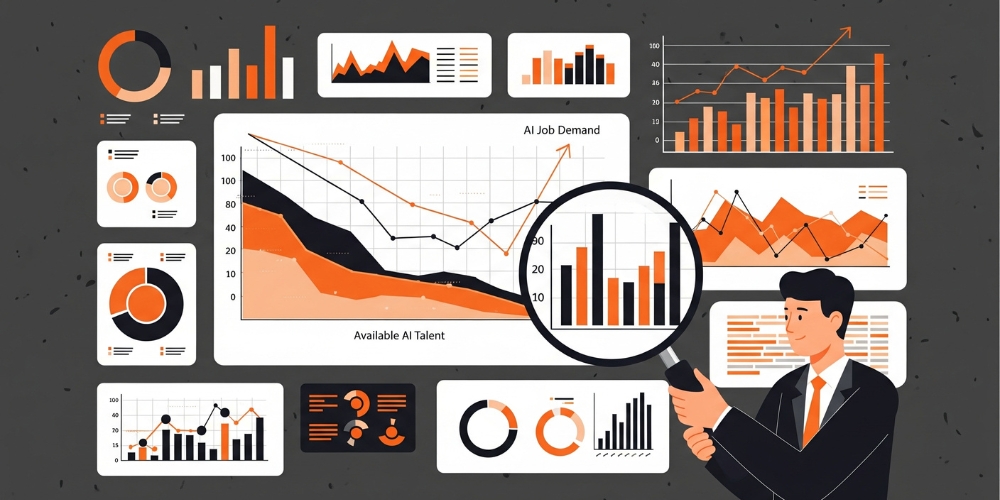
Let’s break down what the AI talent shortage statistics 2024 say and how it will impact 2025:
Skill Mismatch Is the Top Barrier
- 74% of workers said the lack of AI-skilled employees was holding back innovation in their companies.
This backs up what many are experiencing: the issue is a shortage of applicants with relevant, hands-on experience.
The Gap Spans Roles and Industries
The talent gap is most visible in sectors like:
- Finance – where AI is used for fraud detection and risk modeling
- Healthcare – for diagnostic tools and patient data prediction
- Retail & eCommerce – to power recommendation engines and supply chain optimization
- Cybersecurity – as the rise of AI-driven threats requires advanced defense mechanisms
Why the AI Talent Shortage Is Real (and Growing)

While some argue the shortage is exaggerated, the numbers paint a different picture.
The Hard Numbers
- The World Economic Forum projected 97 million new roles will emerge by 2025 due to AI and automation, but also highlighted a lack of qualified professionals in areas such as software development and data science.
- A Gartner report from late 2024 showed that 70-80% of enterprise AI projects fail to scale due to a lack of internal expertise.
It’s Not Just AI. It’s the Whole Tech Stack
The tech talent shortage also expands to a software developer shortage and a critical cybersecurity shortage:
- The global developer population was noted to be 26.3 million in 2023, but that’s still millions short of what businesses need.
- In cybersecurity, the gap hit a record high with 4 million unfilled roles worldwide in 2024.
AI intersects with all of these roles, meaning that when there’s a shortage in software engineering or cybersecurity, it also impacts AI system development, deployment, and maintenance.
The Skills Gap Is the Root
A major contributor to the shortage is the AI-driven skill gap analysis that shows most job applicants lack proficiency in real-world tools like:
- TensorFlow, PyTorch, and other deep learning frameworks
- Cloud platforms (AWS, Azure, GCP)
- MLOps and data pipeline management
- Prompt engineering for LLMs
It’s not about a lack of people. It’s about a lack of qualified people.
The Skills Gap Radar
Select a skill to explore
Choose any skill from the radar to view a quick brief and starter resources.
Why Some Say It’s Overhyped
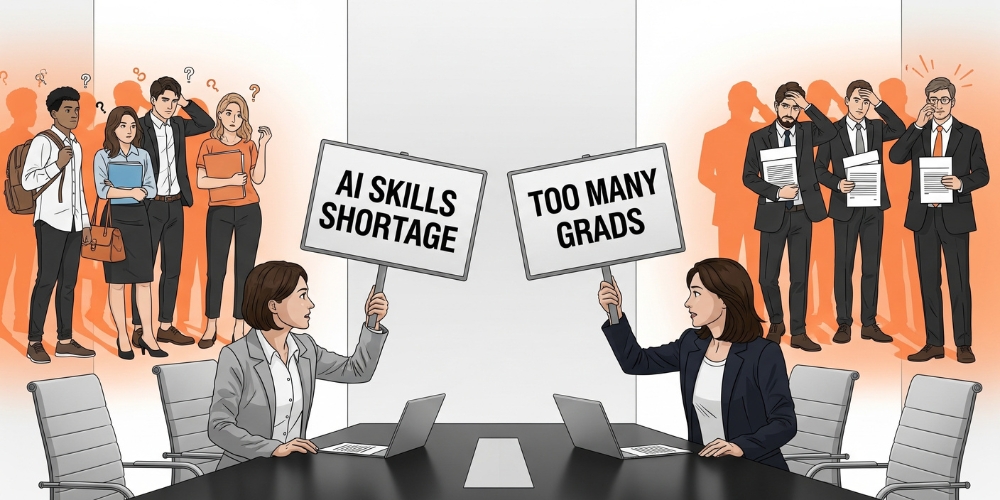
Some experts argue the AI talent shortage isn’t as serious as it seems. They see it more as a disconnect between what companies expect and what candidates offer. Let’s look at why some believe the shortage is overhyped.
1. Oversupply of Talents in Entry-Level Roles
While companies are screaming for AI experts, thousands of new graduates report being unable to find jobs. Why? Because many roles demand experience with production-grade AI, not just academic knowledge.
Job board analytics show a saturation of entry-level applicants, while mid- to senior-level roles remain vacant. This leads to a perception that there’s an oversupply of talent when, in fact, it’s the wrong kind of talent that’s flooding the market.
2. AI Tools Are Doing More of the Work
With the rise of no-code AI platforms like DataRobot, H2O.ai, and AutoML, some organizations argue that fewer experts are needed to build models from scratch. This automation is fueling the idea that the AI talent pool may not need to grow as rapidly as feared.
But here’s the nuance: these tools handle automation, ye,s but companies still need humans to frame the problem, clean the data, evaluate outcomes, and apply ethical oversight. Those aren’t tasks that can be automated just yet.
3. Companies May Be Over-Specifying Roles
Some critics believe hiring teams are building job descriptions for “unicorns” demanding 7+ years of experience, five frameworks, three cloud platforms, and 2 PhDs. These unrealistic expectations fuel the talent gap narrative because very few people can check every box.
Why Some Say It’s Overhyped — Claim ↔ Reality
What This Means for Job Seekers in 2025
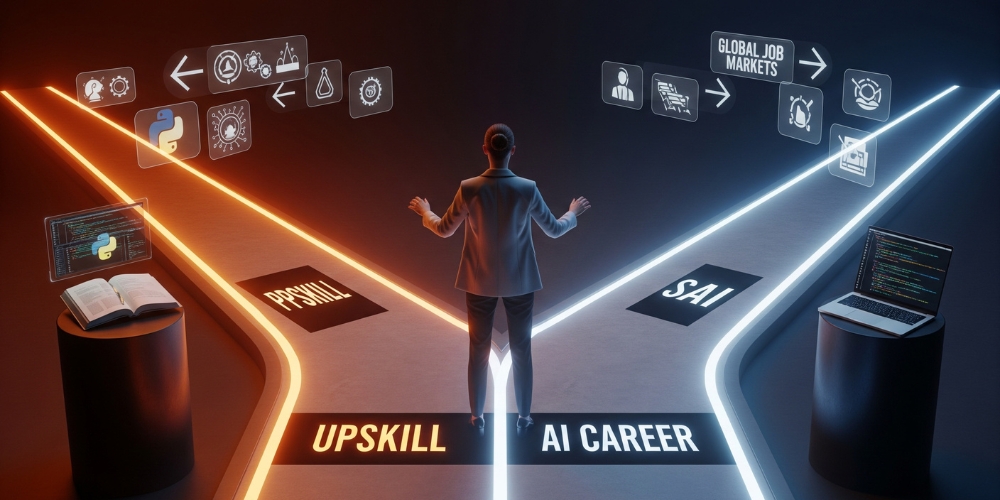
Here’s the good news: if you’re actively building your skills in AI and adjacent fields, the AI talent shortage is a career advantage.
Whether you’re switching from software development or starting fresh, the demand is so high that companies are rethinking how they recruit and upskill talent. The opportunity is massive if you play it smart.
Focus on High-Demand Roles
Some of the hardest to fill AI jobs in 2025 include:
- AI Infrastructure Engineers (cloud-native model deployment)
- Prompt Engineers and LLM Trainers
- MLOps Engineers (automation of model lifecycle)
- AI Governance and Ethics Experts
- Applied AI Specialists (domain-specific like finance or healthcare)
These roles require more than just coding. They need strategic thinking, domain knowledge, and the ability to translate AI outcomes to business value.
Don’t Ignore the Basics
With the growing software developer shortage, many companies are open to hiring developers with strong fundamentals and training them in AI tools. Your ability to learn fast may matter more than your AI résumé.
To bridge the AI-driven skill gap, focus on:
- Python, SQL, and data wrangling
- Understanding ML frameworks like Scikit-learn, TensorFlow, or PyTorch
- Familiarity with cloud platforms (AWS/GCP/Azure)
- Use of real-world datasets (Kaggle, Hugging Face, etc.)
- Deployment skills (Docker, Kubernetes, CI/CD for ML)
Courses like Google’s AI certification and Microsoft’s AI Skills Initiative are great, free starting points to get aligned with the industry.
Invest in Upskilling Solutions That Actually Deliver
Don’t just pick any course. Go for certifications and bootcamps that include:
- Hands-on projects
- Peer reviews or mentorship
- Feedback loops with real-world deployment scenarios
Geography Is on Your Side
You no longer have to live in Silicon Valley to take advantage of the AI talent shortage. With global demand spiking, countries like Canada, the UAE, Germany, and Singapore are heavily investing in AI infrastructure and talent recruitment.
Remote-first companies, too, are looking beyond borders. Many now prioritize skills over geography, especially in 2025, when hybrid work is the norm, not the exception.
What Employers Should Do About the AI Talent Shortage
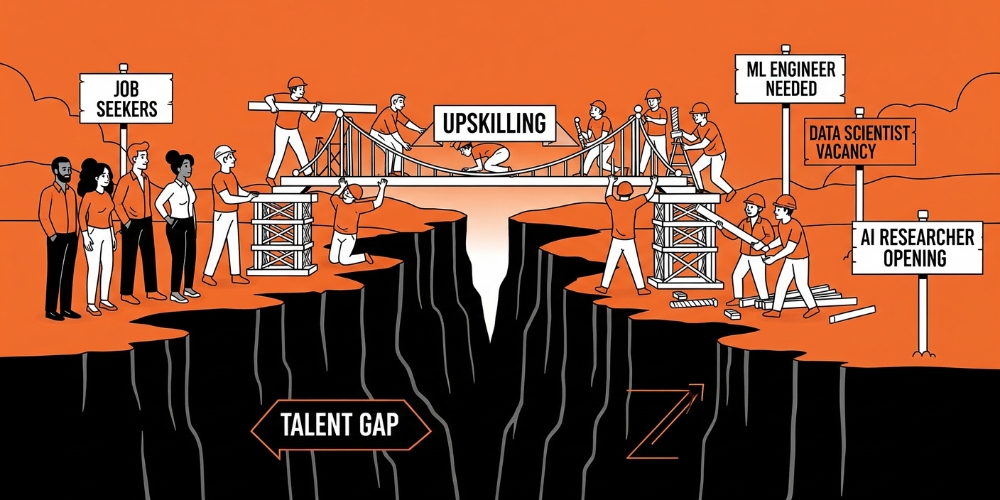
If you’re a business leader or hiring manager, here’s the hard truth: the AI talent shortage isn’t going away anytime soon. But that doesn’t mean you’re powerless. In fact, forward-thinking companies are already turning this challenge into a strategic advantage.
Rethink the Hiring Pipeline
Many companies are still trying to hire “perfect” candidates. What you can do instead is focus on hiring high-potential professionals and offering structured training. This helps counteract the tech talent shortage while building loyalty internally.
Invest in Upskilling Solutions
You don’t always need to hire new talent; you can build it. Launch AI-focused upskilling programs for current employees, especially those in adjacent roles like software development, data analysis, or cloud engineering.
Make sure your programs align with:
- AI-driven skill gap analysis (what does your org really need?)
- Real-world projects
- Measurable learning outcomes
Create a Magnetic Culture for AI Talent
The best AI professionals can pick where they work, and they won’t choose a company buried in red tape or stuck in old ways. If there’s no room to grow, they’ll move on.
What draws them in? A culture that feels open, forward-thinking, and flexible. Let teams experiment across departments. Support fair and responsible AI use. Give people real chances to grow in their roles. And make remote or hybrid options the norm, not a perk.
One more thing: people want to work on something meaningful. For a lot of AI engineers, it’s about building tools that solve real problems, not just chasing clicks.
Broaden the AI Talent Pool
If you’re only hiring from a handful of elite U.S. universities, you’re missing out. Some of the most promising AI professionals are coming from fast-growing global tech hubs.
Cities like Toronto, home to the Vector Institute, and Bangalore, where India’s national AI push is gaining real momentum, are full of rising stars. Berlin brings a strong blend of machine learning research and developer talent. Dubai is quickly becoming a magnet for innovation through its AI 2031 vision.
To reach these candidates, go beyond the typical hiring platforms. Post on global job boards, build relationships with local AI groups, and be open to sponsoring international hires.
Build-Your-Own AI Talent Strategy
Your Strategy Summary
Highlights
KPIs to Track
Next Steps
Conclusion
There isn’t a lack of AI talent; there is a lack of alignment between what companies want and how the talent market is evolving. The challenge is not just hiring more people but building a smarter, more flexible, and future-ready AI workforce.
If you’re a job seeker, learn the right tools, solve real problems, and the world will open up for you. If you’re an employer, start building your own AI talent pool because the war for talent in 2025 is no longer about quantity. It’s about quality, adaptability, and access.
FAQs
What types of AI jobs are hardest to fill?
The most difficult roles to hire for in 2025 include:
- MLOps Engineers (for scaling AI solutions)
- AI Infrastructure Specialists (cloud, distributed systems)
- Ethics & Compliance Experts (especially for generative AI)
- Applied AI Professionals (with industry-specific knowledge)
These positions demand cross-disciplinary expertise, which is why they often stay open for months.
Do I need a PhD to get into AI?
Not anymore. While a PhD is helpful for research-focused roles (like model architecture or theory), most applied AI roles in 2025 do not require a PhD. What matters more is hands-on experience with tools like:
- PyTorch or TensorFlow
- ML pipelines and deployment (e.g., Vertex AI, SageMaker)
- Domain knowledge (finance, healthcare, logistics, etc.)
Plenty of successful AI engineers come from bootcamps or self-taught backgrounds.
How much do AI engineers earn in 2025?
According to Levels.fyi and Glassdoor 2025 data:
- Junior AI Engineer (0–2 yrs): $100K–$140K
- Mid-Level AI Engineer (3–5 yrs): $140K–$180K
- Senior AI Engineer (5+ yrs): $180K–$250K+
- Specialized AI roles (e.g., GenAI, MLOps): Up to $300K or more, especially in high-cost regions like the Bay Area
Remote roles tend to offer slightly lower base salaries but greater flexibility and equity.
Which countries are hiring the most AI talent?
In 2025, the biggest AI talent demand is coming from:
- United States – Still the global leader, especially in AI startups and Big Tech
- United Arab Emirates – Rapid growth under the UAE’s AI 2031 Strategy
- Canada – Strong immigration pathways and research centers
- Germany – Heavy AI investment in manufacturing and automotive sectors
- India – Rising demand in fintech, healthtech, and AI services exports
- Singapore – Government-backed programs to make it a global AI hub
Companies in these regions are offering relocation packages, remote roles, and aggressive compensation to compete for global talent.



